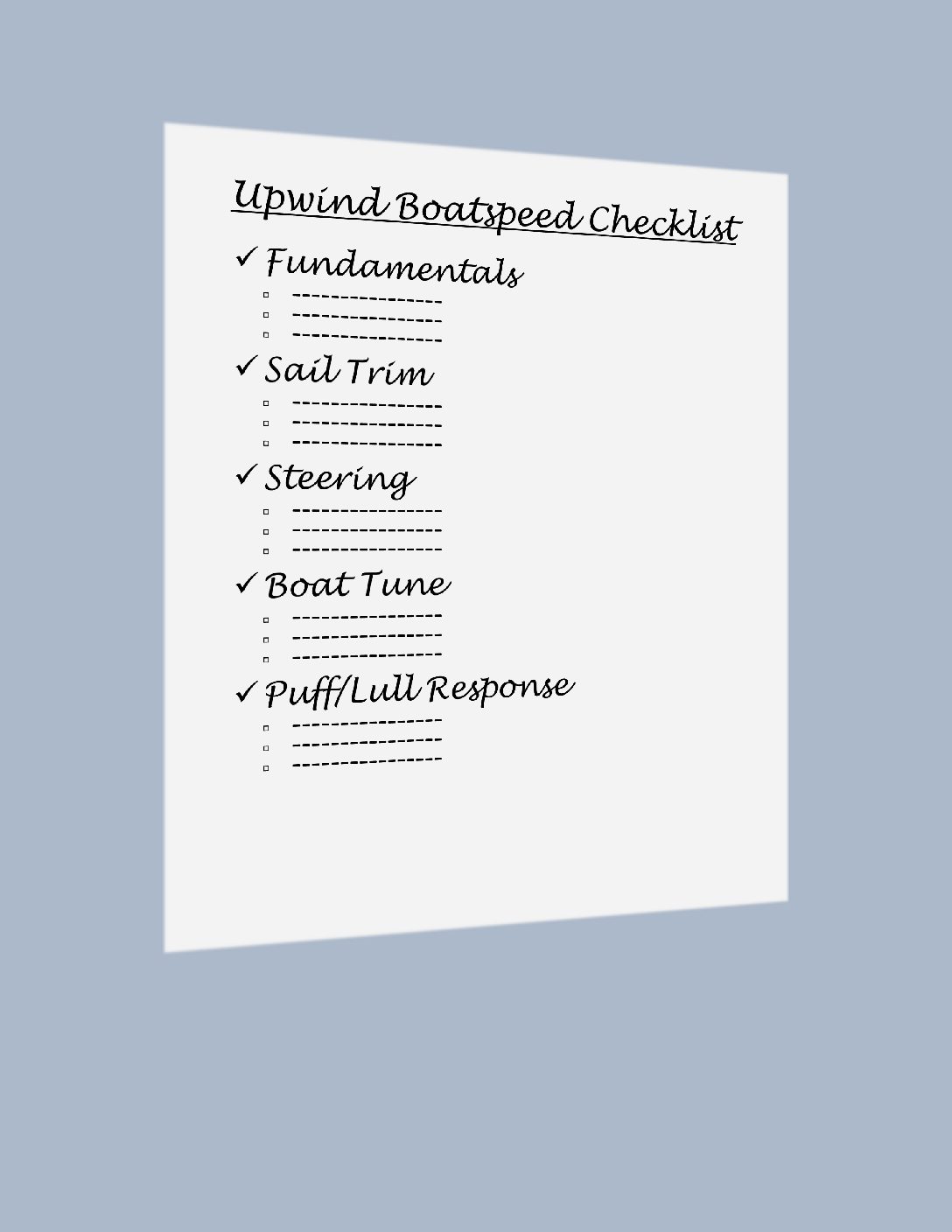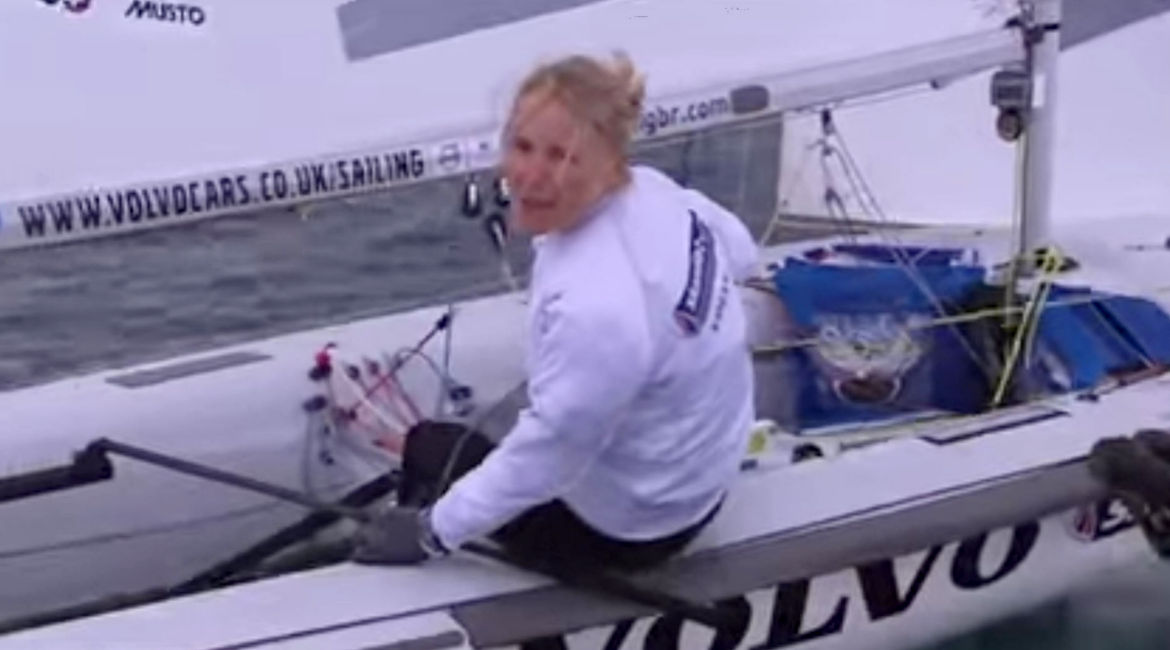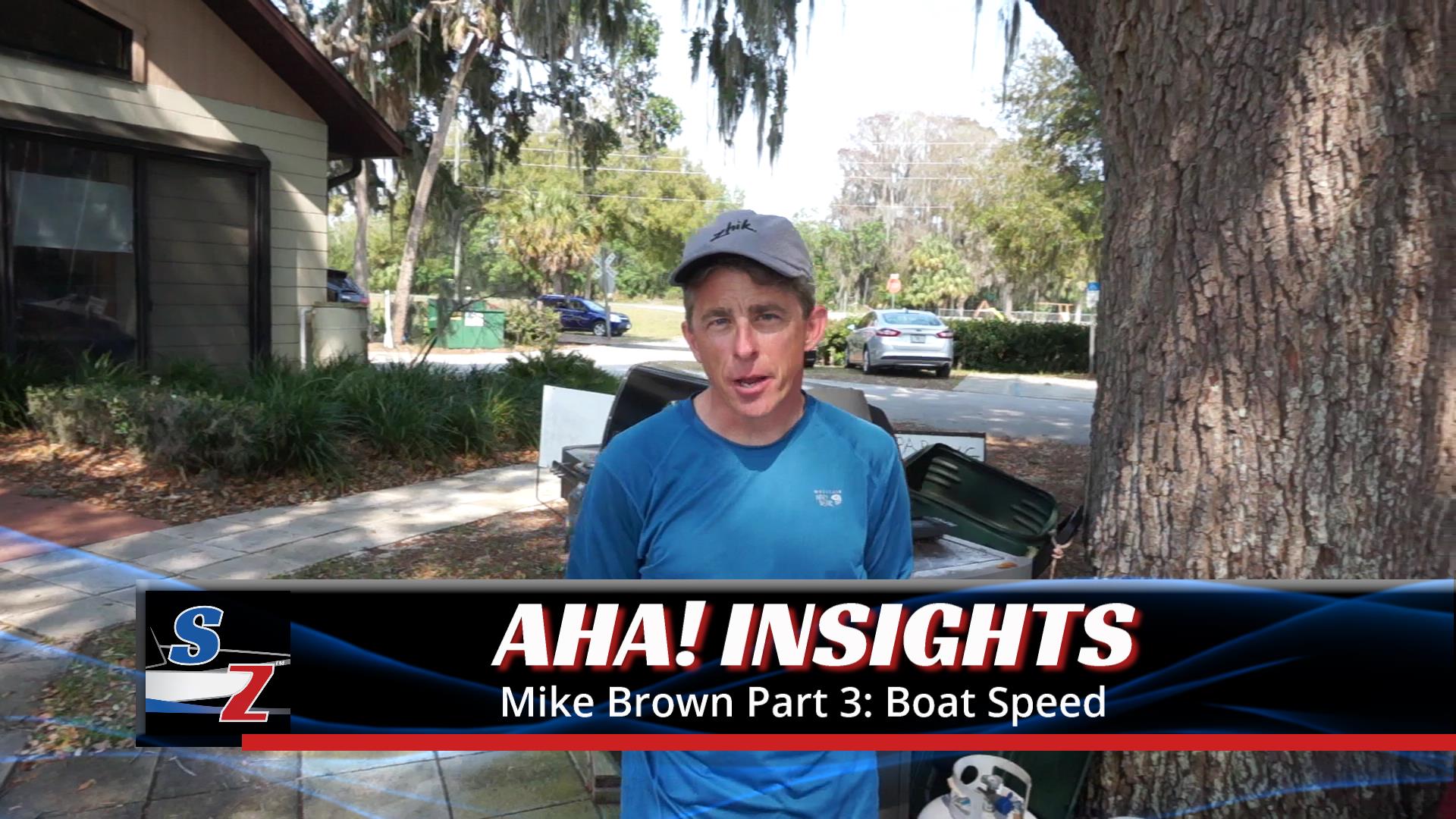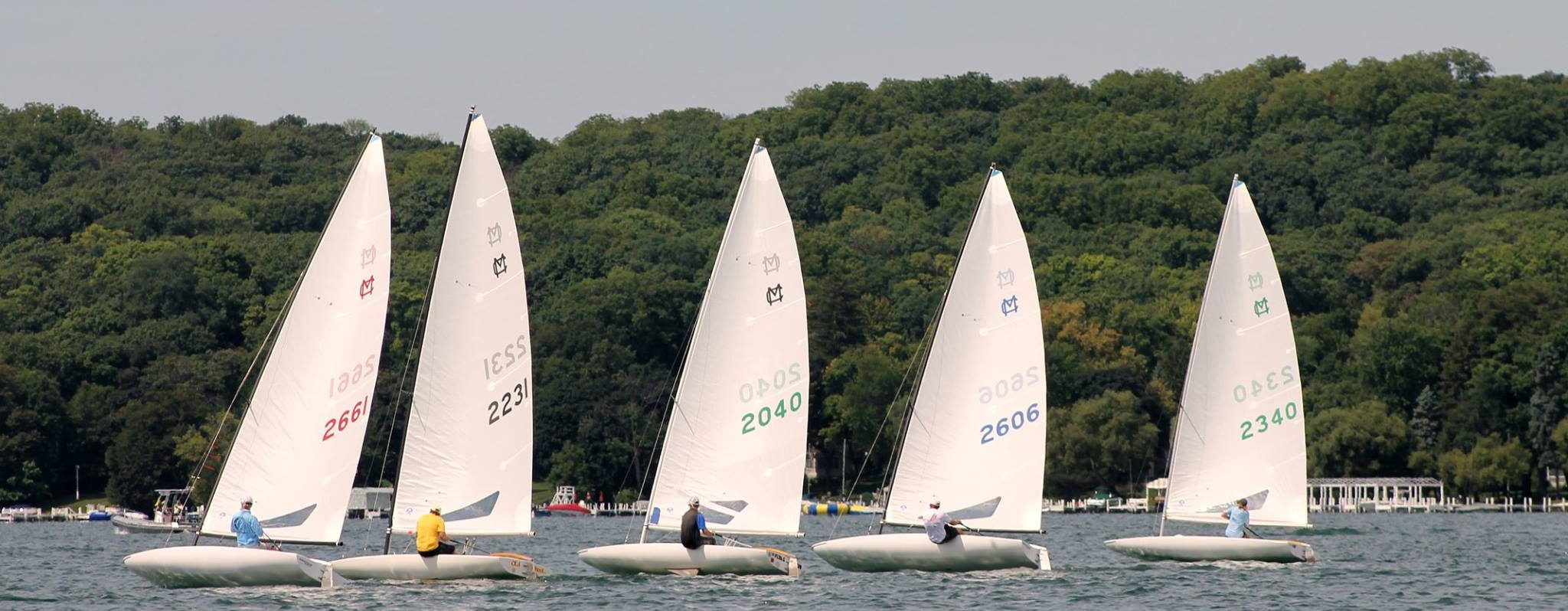We’ve written several posts about various aspects of upwind boat speed, but many readers like content summarized. In this post we present an upwind boat speed checklist, collected from previous SailZing.com content.
These skills require practice to execute them more precisely and consistently. If you recognize areas for improvement, go back and read the source materials listed in the related content section.
Fundamentals
- Speed first, then pointing
- Constant, correct angle of heel
- Sails powered up and max hiking
- Balanced boat to minimize drag
- Quick reactions to maintain these as wind changes
Sail Trim
- Keep top batten parallel to boom (leech ribbons partially stalling) when up to speed
- Use controls to power up and depower
- Mainsheet: trim in to power up, trim harder to flatten sails and point, ease to temporarily depower, trim even harder to depower in conjunction with other controls, ease if consistently overpowered
- Vang to depower bottom half of sail
- Tight vang and loose main to depower top of sail (twist)
- Outhaul to depower lower third of sail and open lower leech
- Cunningham to depower upper leech and move draft forward
- Shape the sail to fit the mast – hint of overbend wrinkles in medium or heavy air
Steering
- Steer using helm feel, luff of sail, luff tales, shroud tales
- Slight weather helm
- Luff of sail is firm
- Luff telltales: windward tales streaming or lifting part time; leeward tales streaming
- Shroud tales streaming toward aft portion of sail; good indicator of changes
- Minimal, smooth steering
- Lock rudder on lap or deck
- Move body weight to assist steering
Boat Tune
- Seek constant angle of heel first, then optimize sail trim and steering
- Zero or minimal weather helm; raise board and/or lower traveler to balance
- Smooth movements in boat
- Wake flat, minimize bubbles with fore-aft weight placement
Puff and Lull Response
- Adjust sail controls just ahead of puff/lull
- Respond with weight, sheets, and steering as the puff/lull hits, not after
- Puff response based on wind regions
- Underpowered: hike and trim as the puff hits, then head up if able
- Transition region: hike, ease if needed, head up after re-trimming
- Overpowered: hike more, feather up and ease, re-trim when able
- Lulls: get weight in, power up sail, don’t bear off more than a few degrees, let boat coast
- Bear off more in waves to keep boat from slowing
Related Content
Solve Common Pointing Problems: Five Ways to Sail Higher
Do You Have the Right Touch? Thoughts from Bruce Goldsmith
Vang Sheeting and Snugging: Video from International Sailing Academy
Sailing Lulls – What’s the Best Response?
Manage Upwind Helm Balance for Speed and Feel
Puff Response: Variations on Ease, Hike, Trim
Upwind Sail Trim Series – SailZing
MC-Scow Sailing Speed Guide Plus Drills
Boat Speed with Dave Ullman and Roble / Shea Sailing
Boatspeed IQ Test – Dave Dellenbaugh in Sailing Breezes – expanded answers at mysailing.com.au





